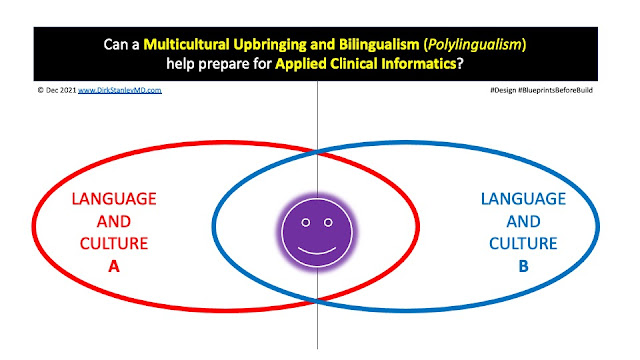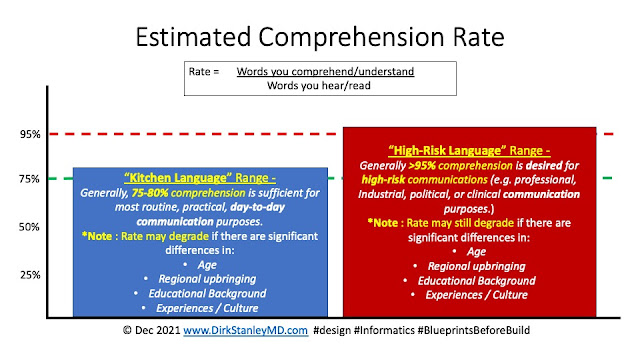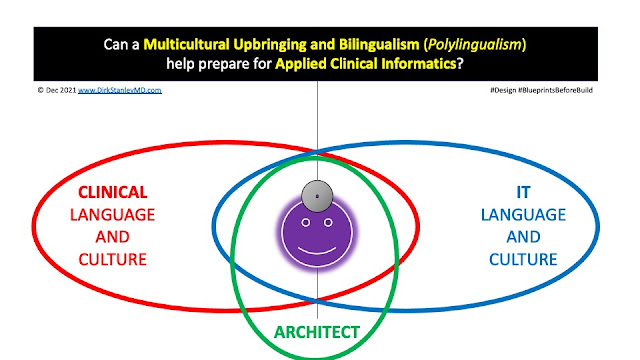Hi fellow CMIOs, CNIOs, and other Applied Clinical Informatics and #HealthIT friends,
In today's post, I thought I'd help answer a common clinical terminology question I sometimes get asked, about information management during inpatient hospitalizations :
- Specialty / Subspecialty
- Service
- (Nursing) Level-of-Care
- Geographic Location
Unfortunately, getting this terminology right is essential to good communication, good patient flow, good bed management, and good data reporting - So for clinical educational purposes, I figured I'd write this helpful primer on these terms, what they do, and how to use them.
A. WHAT IS SPECIALTY (and SUBSPECIALTY)
Specialty (and subspecialty) is what a Provider is trained to do. While the Association of American Medical Colleges (AAMC) recognized the need to stratify medical training back in 1876, this specialty (and subspecialty) training has since continued to evolve.
Today, we recognize a number of :
- RESIDENCIES (SPECIALTY TRAINING)
- FELLOWSHIPS (SUBSPECIALTY TRAINING)
- Select ONE :
- ( ) INTERNAL MEDICINE (General Internal Medicine)
- ( ) INTERNAL MEDICINE > CARDIOLOGY
- ( ) INTERNAL MEDICINE > ENDOCRINOLOGY
- ( ) INTERNAL MEDICINE > GASTROENTEROLOGY
- ( ) INTERNAL MEDICINE > RHEUMATOLOGY
- ( ) INTERNAL MEDICINE > GERONTOLOGY (Geriatrics)
- ( ) INTERNAL MEDICINE > PULMONARY/CRITICAL CARE
- ( ) INTERNAL MEDICINE > HEMATOLOGY / ONCOLOGY
- ( ) PEDIATRICS (General Pediatrics)
- ( ) PEDIATRICS > EMERGENCY MEDICINE
- ( ) PEDIATRICS > NEONATOLOGY
- ( ) EMERGENCY MEDICINE (General emergency medicine)
- ( ) EMERGENCY MEDICINE > TRAUMATOLOGY
- ( ) EMERGENCY MEDICINE > TOXICOLOGY
- ( ) RADIOLOGY (General Radiology)
- ( ) RADIOLOGY > INTERVENTIONAL
- ( ) SURGERY (General Surgery)
- ( ) SURGERY > ORTHOPEDICS
- ( ) SURGERY > PLASTIC SURGERY
- ( ) SURGERY > NEUROSURGERY
- ( ) SURGERY > TRANSPLANT
- ( ) SURGERY > GYNECOLOGIC
- ( ) SURGERY > VASCULAR
- ( ) NEUROLOGY (General Neurology)
- ( ) NEUROLOGY > MOVEMENT DISORDERS
- ( ) NEUROLOGY > MULTIPLE SCLEROSIS
- ( ) OBGYN (General OBGYN)
- ( ) OBGYN > MATERNAL FETAL MEDICINE
- ( ) OBGYN > FERTILITY MEDICINE
- ( ) PSYCHIATRY (General Psychiatry)
- ( ) PSYCHIATRY > CHILD AND ADOLESCENT
Note : While there may be some occasional variation about how one ended up in a particular subspecialty (e.g. Pediatrics>Emergency Medicine, or Emergency Medicine>Pediatrics), historically - this system of categorization has generally worked fairly well, and gives people a good sense of what training the provider has had.
B. WHAT IS A SERVICE?
Service is what the provider actually does. It'stypically one-or-more clinical function(s) that they have been assigned to deliver.
Services are commonly categorized as either INPATIENT, ED, or OUTPATIENT services, and again, a provider may function in one or more services :
- Select ALL THAT APPLY :
- [ ] OUTPATIENT Internal Medicine (Ambulatory Internal Medicine Clinic)
- [ ] INPATIENT Hospitalist
- [ ] INPATIENT Intensivist
- [ ] INPATIENT Labor and Delivery
- [ ] OUTPATIENT Psychiatry
- [ ] INPATIENT Psychiatry
- [ ] EMERGENCY MEDICINE (Emergency Services)
- [ ] INPATIENT Neurology
- [ ] OUTPATIENT Neurology (Ambulatory Neurology Clinic)
- [ ] INPATIENT Surgery
- [ ] OUTPATIENT Surgery (Ambulatory Surgery Clinic)
... and many other clinical services (functions) that have been designed to provide patient care services in various settings.
This is where confusion can sometimes arise, especially for scenarios where a provider might have one specialty but two services, e.g. :
- SPECIALTY/SUBSPECIALTY = INTERNAL MEDICINE (General Internal Medicine)
- SERVICE1 (Primary Service) = OUTPATIENT INTERNAL MEDICINE (General Internal Medicine)
- SERVICE2 (Secondary Service) = INPATIENT HOSPITALIST
Confusing specialty and service can lead to incorrect scheduling of meetings - E.g. Let's say you want to introduce a new outpatient televideo service to your OUTPATIENT INTERNAL MEDICINE docs, then :
- [ WRONG WAY ] Mail to SPECIALTY = Internal Medicine ('Please mail this to all Internal Medicine Docs!')
- [ RIGHT WAY ] Mail to SERVICE = Outpatient Internal Medicine ('Please mail this to all docs who work in the Outpatient Internal Medicine Clinic/Service!')
If you accidentally did mail your announcement to SPECIALTY = Internal Medicine, then half of the recipients might wonder why you contacted them about this new outpatient tool :
- SPECIALTY = INTERNAL MEDICINE - Includes both :
- [ INTENDED AUDIENCE ] SERVICE = Outpatient Internal Medicine
- [ UNINTENDED AUDIENCE ] SERVICE = Inpatient Hospitalist
As you can see, it's very easy to get tripped up on this terminology, when it looks so similar.
One final note about SERVICE - This is often used during inpatient admissions to describe the "Admitting/Covering Service", as in, who should Nursing call when they identify something that needs a Physician's attention?
C. WHAT IS A (Nursing) LEVEL-OF-CARE
The (Nursing) Level-of-Care is an important concept that basically answers the question, "What are the nursing standards that are required for a patient admitted in this hospital bed?" Typically, this is based on patient type and acuity, and is developed in conjunction with both Nursing Leadership and Physician Leadership. From a practical standpoint, this usually needs to include some agreements about :
- Patient Acuity - How active are the patient's medical problems, and how much care will they need? (Low/Medium/High?)
- Standard Frequency of Vitals - How often does a Nurse need to monitor the patient?
- Standard Nursing Skill Set - What are the Nurses trained/certified to do? Is it general care, or specialty care? On what patient population? Adults? Pediatric? Neonates?
- Standard Nurse Staffing Ratios - How many patients are Nurses routinely expected to manage concurrently for this Level-of-Care?
Because these are all important to establish a level-of-care, they are commonly laid out in a table that might look something like this :
- ADMIT TO ADULT MED/SURG :
- [ ] Vital Signs every 8 hours
- [ ] Vital Signs every 6 hours
- ADMIT TO ADULT ICU
- [ ] Vital Signs every 1 hour
- [ ] Vital Signs continuously
D. WHAT IS A GEOGRAPHIC LOCATION?
Geographic location technically should be the easiest concept to manage - It's just the floor/room (and sometimes bed slot, E.g. Bed A or Bed B) that the patient's bed is geographically located in. Sometimes it also includes a temporary location, such as when a patient is being temporarily located in Radiology for an X-ray :
- Geographic Location = Room 401
- Temporary Location = Radiology
- Sometimes displayed as "Room 401 (Radiology)"
However, location can occasionally be confused with a (Nursing) Level of Care, especially when naming conventions sometimes combine these concepts, usually intended for convenience purposes. (E.g. "5th Floor Telemetry")
Note that there are two challenges that can sometimes occur when combining these concepts in the naming convention for your geographic locations/floors :
1. FIRST CHALLENGE : The first of these challenges is boarding - which is when a patient bed needs to be created in a non-standard location, usually for patient flow and/or surge purposes. For example -
- If you usually have ten (10) beds on your FOURTH floor, where you commonly care for up to ten (10) Med/Surg patients...
- One day, you have a patient surge, and need to be able to care for twelve (12) Med/Surg patients...
- ... then you will need to create two (2) extra Med/Surg beds, maybe on the FIFTH floor.
Assuming you are approved to 'surge' your bed capacity like this, and have the Med/Surg nurses available to support those two (2) extra Med/Surg beds on the FIFTH floor, then you can hypothetically create a bed with a defined (Nursing) level-of-care in any geographic location that can support the delivery of the necessary (Nursing) level-of-care.
For example, in an disaster scenario, you could hypothetically make a med/surg bed available in your cafeteria (assuming you had the available resources) :
- ADMIT TO = Med/Surg Level-of-care
- GEOGRAPHIC LOCATION = CAFETERIA Bed 2
- SERVICE = Inpatient Hospitalist
Or, if you are admitting a Med/Surg Patient from the Emergency Room to your FOURTH floor (where you commonly care for Med/Surg patients) - If there is no bed available on the FOURTH floor, you you could hypothetically admit and 'board' the Med/Surg patient (temporarily) in an Emergency Department location :
- ADMIT TO = Med/Surg Level-of-Care
- GEOGRAPHIC LOCATION = ED Bed 2
- SERVICE = Inpatient Hospitalist
- ADMIT TO = Med/Surg Level-of-Care
- GEOGRAPHIC LOCATION = Fourth Floor Bed 401
- SERVICE = Inpatient Hospitalist
2. SECOND CHALLENGE : The second challenge that comes from naming conventions that combine concepts (e.g. "FOURTH Floor Med/Surg") is data-reporting. Suppose that when beds are needed - you
- sometimes have to board MED/SURG patients on your FIFTH floor, or
- sometimes you have to board TELEMETRY patients on your FOURTH floor.
And then one day, you need to know, "How many Med/Surg patients did we see last month?"
- If you generate a report of 'How many patients were geographically admitted to the FOURTH floor', you may miss any Med/Surg patients who were boarded in other locations, or over-count other telemetry patients who might have been temporarily boarded on the FOURTH floor.
- If, instead, you generate a report of 'How many patients were admitted with a Level-of-Care=Med/Surg", your report will be accurate and will account for any patients who were temporarily boarded in non-standard locations.
- [ REQUIRED ] ADMIT TO = ________ (Nursing) Level-of-care
- [ REQUIRED ] SERVICE = ___________
- [ OPTIONAL ] GEOGRAPHIC LOCATION=(Use only if a particular location is necessary, otherwise Nursing may not have any flexibility about where to geographically locate the patient in a surge/boarding scenario.)
... and why it's also helpful to track doctors by both their specialty/subspecialty and also their service(s) :
- SPECIALTY/SUBSPECIALTY = Internal Medicine (General Internal Medicine)
- SERVICE1 (Primary Service) = Inpatient Hospitalist
- SERVICE2 (Secondary Service) = Outpatient General Internal Medicine
While this may have been somewhat lengthy, I hope this helps you review and discuss this terminology with your own teams.
Remember, this blog is for academic/discussion purposes only - Your mileage may vary! Have any patient flow or bed management tips you'd like to share? Have any experiences managing this terminology with your teams, or any other feedback you'd like to share? Leave it in the comments section below!







